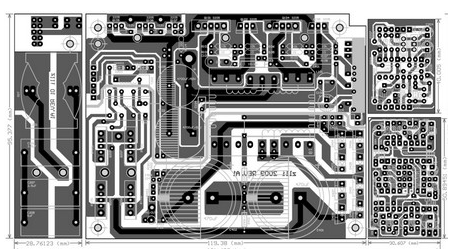In PCB circuit board processing, ammonia etching is a relatively fine and impurity chemical reaction process, but it is also an easy job to carry out. As long as the process reaches the adjustment, continuous production can be carried out, but the key is to maintain a continuous working state after starting the machine, which is not suitable for intermittent production. The etching process is extremely dependent on the state of the equipment, so it is necessary to keep the equipment in good condition at all times.
At present, no matter what kind of etching solution is used, high-pressure spraying must be used. In order to obtain neater side lines and high-quality etching effects, the nozzle structure and spraying method must be more stringent. For manufacturing methods with excellent side effects, there are different theories, design methods and equipment structure research in the outside world, but these theories are often different. However, one of the most basic principles has been recognized and confirmed by chemical mechanism analysis, which is to keep the metal surface in constant contact with fresh etching solution as soon as possible.

In ammonia etching, assuming that all parameters remain unchanged, the etching rate will be mainly determined by the ammonia (NH3) in the etching solution. Therefore, the use of fresh solution to interact with the etched surface has two main purposes: flushing out the newly generated copper ions and continuously supplying ammonia (NH3) required for the reaction.
In the traditional knowledge of the circuit board industry, especially the suppliers of printed circuit board raw materials, they all agree, and experience has confirmed that the lower the monovalent copper ion content in the ammonia etching solution, the faster the reaction speed.
In fact, many ammonia-based etching solution products contain special ligands for copper ions (some complex solvents), whose function is to reduce the monovalent copper ions (the product has a technical secret of high reactivity). It can be seen that the monovalent copper The influence of ions is not small.
When the monovalent copper is reduced from 5000ppm to 50ppm, the etching rate is more than doubled.
Because a large amount of monovalent copper ions are generated during the etching reaction, and the monovalent copper ions are always tightly combined with the complexing group of ammonia, it is very difficult to keep its content close to zero.
However, the spraying method can convert monovalent copper into divalent copper and remove the monovalent copper through the action of oxygen in the atmosphere. This is a functional reason for the need to pass air into the etching box. However, if there is too much air, it will accelerate the loss of ammonia in the solution and decrease the pH value, which will reduce the etching rate. The amount of ammonia change in the solution also needs to be controlled. Some users adopt the method of passing pure ammonia into the etching storage tank, but to do so, a set of pH meter control system must be added. When the automatically monitored pH result is lower than the default When the value is set, the solution will be added automatically.
In the related chemical etching (also known as photochemical etching or PCH) field, research work has begun and reached the stage of etching machine structure design. The solution used in this method is divalent copper, not ammonia-copper etching, it may be used in the printed circuit industry. In the PCH industry, the typical thickness of etched copper foil is 5 to 10 mils (mils), but in some cases the thickness is quite large. Its requirements for etching parameters are often more stringent than the PCB industry. There is a research result from the PCM industrial system that has not been officially published. I believe the result will be refreshing.
Thanks to the strong project funding support, researchers have the ability to change the design of the etching device in the long term, and at the same time study the effects of these changes.